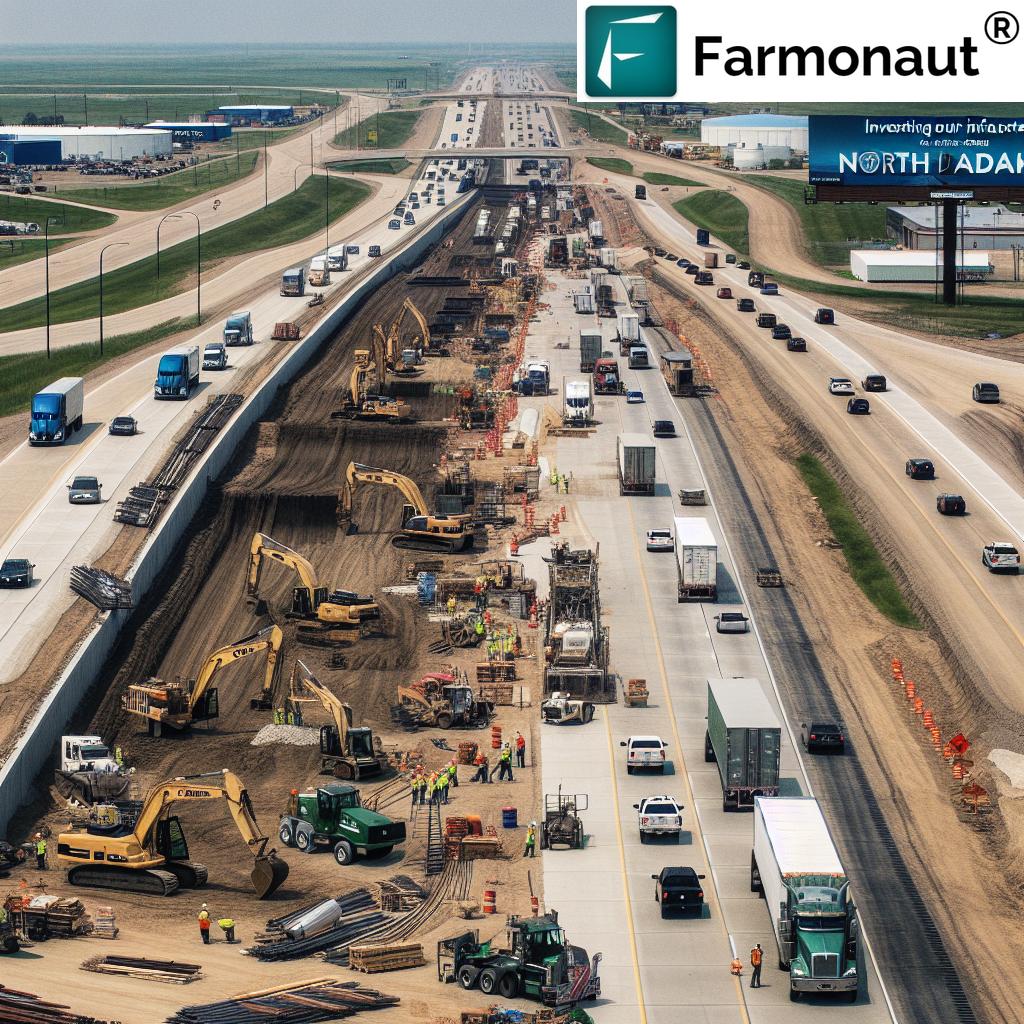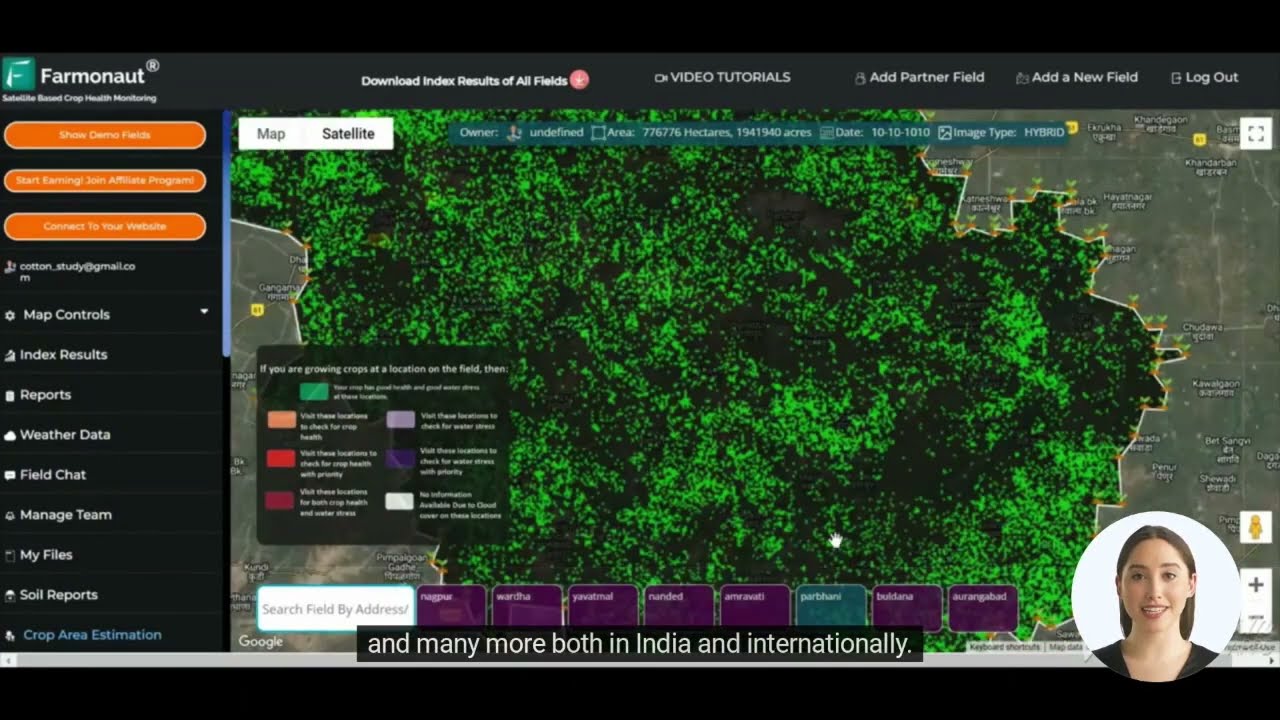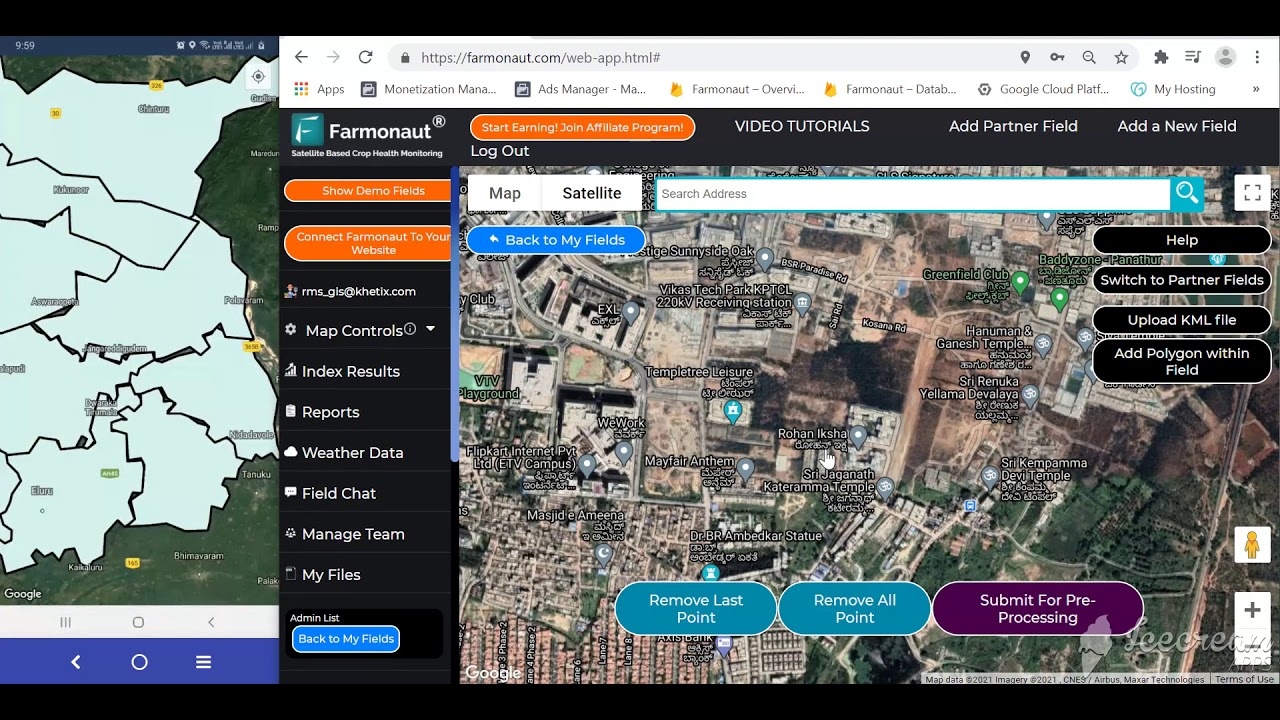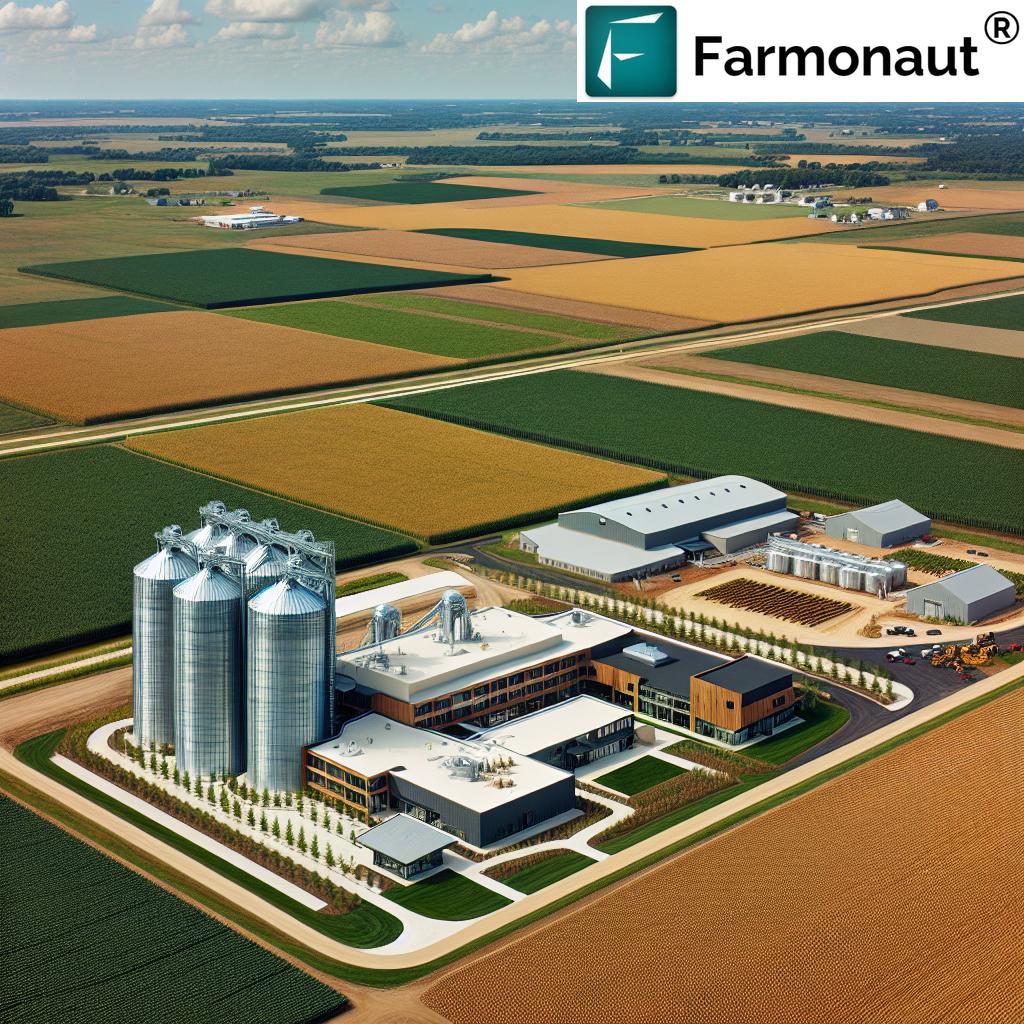North Dakota’s Gas Tax Hike: Boosting Rural Road and Bridge Infrastructure Funding
“North Dakota’s proposed gas tax hike aims to create a fund for 53 non-oil-producing counties’ road and bridge maintenance.”
Welcome to our comprehensive analysis of North Dakota’s latest legislative initiative aimed at addressing the state’s rural infrastructure challenges. In this blog post, we’ll delve into the details of the proposed gas tax increase and its potential impact on road and bridge funding across the state, particularly in non-oil-producing counties.
Understanding the Proposed Gas Tax Hike
The North Dakota House recently passed a bill that would raise the state’s gas tax to create a dedicated fund for roads in non-oil-producing counties. This significant move comes as part of a broader effort to address the growing infrastructure needs in rural areas of the state.
Here are the key points of the proposed legislation:
- A 3% increase in the state gas tax
- Creation of a county, city, and township road fund
- Increased fees for electric and plug-in hybrid vehicles
- Targeted funding for non-oil-producing counties
Let’s break down these elements and explore their potential implications for North Dakota’s transportation infrastructure.
The Gas Tax Increase: Fueling Rural Road Improvements
The centerpiece of the proposed bill is a 3% increase in the state’s gas tax. This raise would bring the excise tax on all special fuel sold or used in North Dakota to 26 cents per gallon. While any tax increase can be contentious, supporters argue that this modest hike is necessary to address critical infrastructure needs, particularly in rural areas.
Rep. Mike Brandenburg, R-Edgeley, emphasized the importance of this increase, stating, “We’re having more impacts on these roads and we (are using) more gas, and we pay for them with that gas tax. The bridges are being impacted. There’s many that need to be replaced, and this is a small way to help out so that we can get those roads fixed, as well as keep gravel on the roads.”

Creating a Dedicated Fund for Rural Infrastructure
One of the most significant aspects of the proposed bill is the creation of a county, city, and township road fund. This new fund would be specifically allocated to address the infrastructure needs of non-oil-producing counties, which often struggle to secure adequate funding for road and bridge maintenance and replacement.
The distribution of this fund would be as follows:
- Two-thirds of the funding would go to non-oil-producing counties and cities in these counties for road infrastructure
- One-third would be allocated to non-oil-producing counties for the benefit of organized and unorganized townships, specifically for road and bridge purposes
This targeted approach aims to address the unique challenges faced by rural communities in maintaining their transportation infrastructure.
Adjusting Fees for Electric and Hybrid Vehicles
In recognition of the changing landscape of vehicle technology, the bill also proposes adjustments to fees for electric and plug-in hybrid vehicles. These changes include:
- Raising the “electric vehicle road use fee” from $120 to $150 for each registered electric vehicle
- Increasing the “plug-in hybrid vehicle road use fee” from $50 to $60 for each registered plug-in hybrid vehicle
These fees would be collected at the beginning of each annual registration period and added to the Highway Tax Distribution Fund. This adjustment aims to ensure that all road users contribute fairly to the maintenance and improvement of the state’s transportation infrastructure.
The Financial Impact: Investing in North Dakota’s Future
According to the bill’s fiscal note, this initiative would generate approximately $42 million in the 2025-27 and 2027-29 bienniums. This significant influx of funding could have a substantial impact on the state’s ability to address its infrastructure needs, particularly in rural areas that have been struggling with road and bridge maintenance.
“The new bill, passed by North Dakota’s House, could potentially impact over 10,000 miles of rural roads and bridges.”
Addressing the Needs of Non-Oil-Producing Counties
One of the primary goals of this legislation is to provide targeted support for non-oil-producing counties. These areas often face unique challenges in maintaining their infrastructure due to:
- Limited local tax bases
- Increased agricultural traffic
- Aging roads and bridges
- Weather-related wear and tear
By creating a dedicated fund for these counties, the bill aims to address these specific challenges and ensure that rural communities have the resources they need to maintain safe and efficient transportation networks.
The Impact of Agricultural Traffic on Rural Roads
One of the key factors driving the need for increased infrastructure funding in rural areas is the changing nature of agricultural practices. Modern farming often involves larger, heavier equipment and more frequent transportation of crops and supplies. This increased traffic puts additional strain on rural roads and bridges, many of which were not designed to handle such heavy loads.
The proposed bill recognizes this reality and aims to provide the necessary resources to maintain and upgrade rural infrastructure to meet these evolving needs. By investing in stronger, more durable roads and bridges, North Dakota can support its vital agricultural sector while ensuring safe and efficient transportation for all residents.
Comparative Analysis: Current Status vs. Proposed Changes
| Aspect | Current Status | Proposed Changes |
|---|---|---|
| Gas Tax Rate | 23 cents per gallon | 26 cents per gallon (3% increase) |
| Electric Vehicle Fees | $120 for electric, $50 for plug-in hybrid | $150 for electric, $60 for plug-in hybrid |
| County and Township Road Fund | No dedicated fund | New fund created |
| Allocation to Non-Oil-Producing Counties | Limited specific allocation | 2/3 of new fund for counties/cities, 1/3 for townships |
| Focus on Rural Roads and Bridges | No specific rural focus | Targeted funding for rural infrastructure |
The Legislative Journey: From House to Senate
While the bill has passed the North Dakota House, it still faces several hurdles before becoming law. The next steps in the legislative process include:
- Senate consideration and potential amendments
- If passed by the Senate, reconciliation of any differences between House and Senate versions
- Final approval by both chambers
- Governor’s signature or veto
As the bill moves through these stages, we can expect continued debate and potential adjustments to its provisions. Stakeholders from various sectors, including agriculture, transportation, and local government, will likely weigh in on the proposed changes.

The Debate: Supporters vs. Opponents
As with any significant policy change, the proposed gas tax increase and infrastructure funding bill has both supporters and detractors. Let’s examine some of the key arguments on both sides:
Supporters’ Arguments
- Necessary investment in rural infrastructure
- Addresses the impact of changing agricultural practices on roads
- Creates a dedicated funding stream for non-oil-producing counties
- Helps maintain and replace aging bridges
- Ensures all road users, including electric vehicle owners, contribute to maintenance
Opponents’ Concerns
- Increases the tax burden on North Dakota residents
- Questions the need for a new fund when other funding streams exist
- Concerns about the impact on low-income residents and rural communities
- Debates over the fairness of the distribution formula
As the bill progresses through the legislative process, these arguments will likely be debated extensively, potentially leading to amendments or adjustments to address various concerns.
The Broader Context: Infrastructure Challenges in Rural America
North Dakota’s proposed gas tax hike and infrastructure funding bill is part of a larger national conversation about the challenges facing rural infrastructure. Across the United States, many rural communities are grappling with aging roads, bridges, and other transportation infrastructure that are critical to their economic vitality and quality of life.
Some of the common challenges faced by rural areas include:
- Limited local tax bases to fund infrastructure projects
- Increasing demands on roads due to changes in agricultural and industrial practices
- The need to maintain vast networks of roads and bridges with relatively small populations
- Weather-related wear and tear, particularly in regions with harsh climates
- Difficulty attracting federal funding for smaller-scale projects
North Dakota’s approach to addressing these challenges through a targeted gas tax increase and dedicated funding stream could serve as a model for other states facing similar issues.
The Role of Technology in Infrastructure Management
As we consider the future of North Dakota’s rural infrastructure, it’s worth noting the increasing role that technology plays in road and bridge management. Advanced monitoring systems, data analytics, and predictive maintenance tools can help state and local governments make more efficient use of their infrastructure funding.
For example, satellite-based monitoring systems like those offered by Farmonaut can provide valuable insights into land use patterns and environmental factors that impact road and bridge conditions. While primarily focused on agricultural applications, these technologies have potential broader applications in infrastructure management.
Earn With Farmonaut: Join our affiliate program and earn 20% recurring commission by helping farmers save 10%. Onboard 10 Elite farmers monthly to earn a minimum of $148,000 annually—start now and grow your income!
The Potential Impact on North Dakota’s Economy
Investing in rural infrastructure through the proposed gas tax increase could have significant positive effects on North Dakota’s economy. Well-maintained roads and bridges are crucial for:
- Efficient transportation of agricultural products
- Supporting rural businesses and industries
- Attracting new investments to rural areas
- Improving safety and reducing accidents
- Enhancing overall quality of life in rural communities
By addressing the infrastructure needs of non-oil-producing counties, the bill aims to promote more balanced economic development across the state, potentially reducing the disparities between urban and rural areas.
Environmental Considerations
While the primary focus of the bill is on infrastructure funding, it’s worth considering the potential environmental implications of the proposed changes. The increased fees for electric and plug-in hybrid vehicles raise questions about the balance between encouraging the adoption of cleaner technologies and ensuring all road users contribute to maintenance costs.
Additionally, improving road conditions can lead to more efficient transportation, potentially reducing fuel consumption and emissions. As North Dakota considers its long-term infrastructure strategy, integrating environmental sustainability into planning and construction processes will be increasingly important.
Looking to the Future: North Dakota’s Infrastructure Vision
As North Dakota grapples with the challenges of maintaining and improving its rural infrastructure, the proposed gas tax increase and dedicated funding stream represent a proactive approach to addressing these issues. By recognizing the unique needs of non-oil-producing counties and creating a targeted funding mechanism, the state is taking steps to ensure the long-term viability of its transportation network.
However, as the bill progresses through the legislative process, it will be crucial for policymakers to consider:
- The equitable distribution of funds across different regions and communities
- The potential impact on low-income residents and measures to mitigate any negative effects
- The integration of new technologies and sustainable practices in infrastructure development
- Long-term planning for future infrastructure needs, including the potential shift towards electric vehicles
By addressing these considerations, North Dakota can develop a comprehensive approach to infrastructure funding that supports its rural communities, strengthens its economy, and prepares the state for future challenges and opportunities.
Conclusion: A Pivotal Moment for North Dakota’s Infrastructure
The proposed gas tax increase and rural infrastructure funding bill represent a significant moment in North Dakota’s ongoing efforts to maintain and improve its transportation network. By recognizing the unique challenges faced by non-oil-producing counties and creating a dedicated funding stream, the state is taking proactive steps to address critical infrastructure needs.
As the bill moves through the legislative process, it will undoubtedly face further scrutiny and debate. However, the core principle of investing in rural infrastructure to support economic development, improve safety, and enhance quality of life is likely to remain a priority for many North Dakotans.
We’ll continue to monitor the progress of this important legislation and provide updates as it moves through the Senate and potentially to the Governor’s desk. The outcome of this bill could have far-reaching implications for North Dakota’s rural communities and the state’s overall economic future.
FAQ Section
Q: Why is North Dakota considering a gas tax increase?
A: North Dakota is considering a gas tax increase to create a dedicated fund for road and bridge maintenance in non-oil-producing counties. This fund aims to address the unique infrastructure challenges faced by rural areas.
Q: How much will the gas tax increase?
A: The proposed bill would increase the gas tax by 3%, bringing the excise tax on special fuel to 26 cents per gallon.
Q: How will the new fund be distributed?
A: Two-thirds of the funding would go to non-oil-producing counties and cities for road infrastructure, while one-third would be allocated to townships in these counties for road and bridge purposes.
Q: Will electric vehicle owners be affected?
A: Yes, the bill proposes to increase fees for electric and plug-in hybrid vehicles to ensure these road users also contribute to infrastructure maintenance.
Q: When could this bill become law?
A: The bill has passed the North Dakota House but still needs to go through the Senate and receive the Governor’s approval before becoming law. The timeline for this process can vary.
Q: How much additional funding could this bill generate?
A: According to the bill’s fiscal note, it would generate approximately $42 million in the 2025-27 and 2027-29 bienniums.
Q: How will this bill impact rural communities?
A: The bill aims to provide targeted funding for rural road and bridge maintenance, potentially improving transportation infrastructure in non-oil-producing counties.
For more information on innovative agricultural technologies that can complement infrastructure improvements, check out Farmonaut’s solutions:
For developers interested in integrating agricultural data into their applications, explore Farmonaut’s API and API Developer Docs.



















